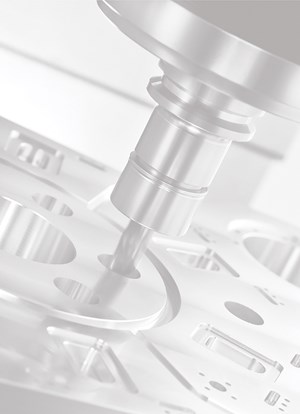CAMWorks 2019 Enables AM Programming in Addition to Machining
Version 2019 of CAMWorks from HCL Technologies enables additive manufacturing and includes Tolerance-Based Machining (TBM) for turned and turn-milled parts as well as improvements to Technology Database (TechDB).
Share


Version 2019 of CAMWorks from HCL Technologies enables additive manufacturing and includes Tolerance-Based Machining (TBM) for turned and turn-milled parts as well as improvements to the Technology Database (TechDB).
Additive Manufacturing functionality enables users to prepare models for their 3D metal printers inside Solidworks. The 3D printer model is then used as stock, and CAMWorks will generate the CNC subtractive machining operations and tool paths needed to remove the build supports and machine other user-defined areas of the part. The design, additive manufacturing and subtractive machining information are all stored within a single file for full associativity with the Solidworks model.
The software’s TBM technology for lathes and turn-mills is designed to help users move their programming to Industry 4.0 procedures by recognizing and using Product and Manufacturing Information (PMI) — such as GD&T dimensions, notes and callouts — as well as Model Based Definition (MBD) information in the 3D model. Users can thereby eliminate the cost and manual tasks involved when using 2D drawings, and dramatically reduce the time needed to generate CNC programs for parts with close tolerances and surface finish requirements, the company says. TBM automatically selects machining strategies that can meet the tolerance requirements; and because it is fully associative with Solidworks, any tolerance changes made to the model will automatically be updated in the CNC programming.
CAMWorks 2019 also provides several improvements to TechDB, which captures programmers’ best practices. With TechDB, users can define their preferred tools, speeds and feeds, machining strategies and associative parameters for the CNC machines on their shop floor. In addition, the data can be shared with other programmers and designers.
Related Content
-
Refining the Handoff Between the CAM Program and the Real-World Process
Despite the best intentions in the virtual world, the manufacturing process is limited to what survives the handoff from screen to spindle.
-
Blueprints to Chips: CAD/CAM Tips and Tricks
This collection of articles delves into the latest CAD/CAM innovations, from AI-driven automation and optimized tool paths to the impact of digital twins and system requirements.
-
Five-Axis CAM Strategies Cut Cycle Time for Two Shops
After being acquired by the same parent company, two shops found that working together and sharing knowledge improved both of their bottom lines.














.png;maxWidth=300;quality=90)




